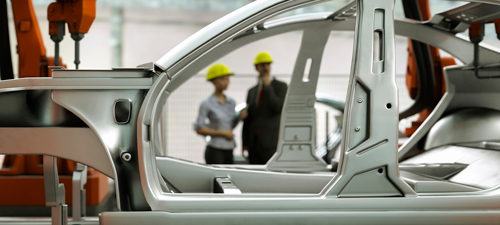2025 may seem like a long ways off for some of us, but for automotive manufacturers around the U.S., it’s only a few product design cycles away from reality. That’s a scary thought for some, as 2025 happens to be when the Corporate Average Fuel Economy reaches 54.5 miles per gallon.
Lightweighting is one method automakers are using to help increase vehicle fuel efficiency; a variety of parts, from engine and power train components to outer body panels, have undergone transformations to create lighter weight parts that can withstand the fairly harsh conditions most automobiles and industrial vehicles will endure during their lifetime.
That’s great news for manufacturers offering metal to plastic part conversion. Those who have the materials expertise to engineer new parts that are not only lighter, but also tough enough to handle high temperatures, general wear and tear, and exposure to chemicals. Metal to plastic part conversion is hardly new, but advances in composites and other lightweight materials have continued to offer new opportunities to convert efficiently and cost effectively–many opportunities that may not have been available 10, 5, or even in the previous couple of years.
There is almost no part too small or, it turns out, too big to convert from metal to a lighter weight material. The Energy Department has reported that reducing a vehicle’s weight by just 10% can also improve fuel economy by 6-8%. New composites and other materials on the market today will still be required to pass safety testing so drivers can rest assured that new materials, though lighter, aren’t more dangerous as well.
Have an automotive component in need of a lighterweight solution? Contact KASO today to learn more about metal to plastic conversion.








 Molding services for Agricultural customers
Molding services for Agricultural customers